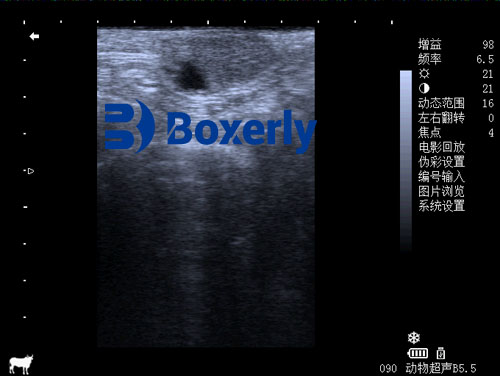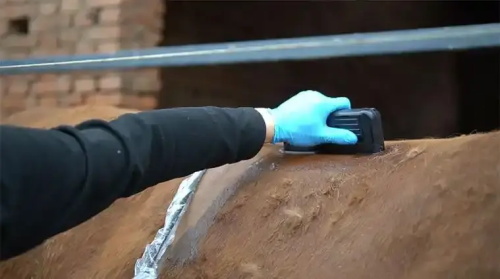As a livestock farmer, understanding the precise growth stages of beef cattle is key to maximizing productivity and making informed decisions about feeding, fattening, and slaughter timing. Among the many tools available to monitor animal development, ultrasonography—particularly B-mode ultrasound—is one of the most reliable, non-invasive, and insightful methods for evaluating muscle growth, fat deposition, and skeletal development in young cattle. En este artículo, I’ll share how we use ultrasound to assess the growth of young beef cattle and explain why this technique has become indispensable on my farm.

Understanding the Growth Phase of Young Cattle
Cattle enter the youth phase—also known as the post-puberty, pre-mature stage—after reaching sexual maturity but before reaching full physical maturity. During this phase, the animal continues to gain weight, although the rate of weight gain begins to slow, even as absolute body mass still increases.
In this period, mientras que el height and length of the animal grow steadily, el width and depth of the body tend to expand more rapidly. In my daily practice, I find that the most noticeable change is in body width, which correlates with increased muscle mass, particularly in the loin and rump areas. This is where ultrasound imaging of the Longissimus dorsi muscle becomes especially valuable.
Using a veterinary B-mode ultrasound, we can measure the muscle cross-sectional area—commonly referred to as Área de los músculos del ojo (EMA)—to track the development speed of muscular tissues. En esta etapa, the increase in muscle size is quite rapid, providing important data for determining whether an animal is suitable for early fattening or slaughter.
Growth Patterns: The S-Shaped Curve
Beef cattle grow along an S-shaped curve, a pattern well-documented in animal science. Initially, postnatal growth is slow as the newborn calf adjusts to life outside the womb. Entonces, during the early juvenile period, the growth rate accelerates, peaking just before or around sexual maturity.
Sin embargo, after the animal becomes sexually mature, growth slows significantly. When conducting ultrasound scans during this stage, I’ve observed that the eye muscle area plateaus, showing minimal change. This indicates that muscle development has mostly stabilized, and further growth will primarily involve fat accumulation, especially in later-maturing breeds or under high-energy feeding conditions.

Tissue Development Sequence
Cattle tissue development follows a sequential pattern that begins even in the embryonic stage. The sequence typically goes as follows:
-
Nervous system (develops first and completes earliest)
-
Skeletal system
-
Muscular system
-
Adipose (fat) tissue (develops last)
Regardless of breed or feeding strategy, éste order of tissue development is consistent. Sin embargo, early-maturing breeds and those given adequate nutrition grow faster and complete development earlier than their later-maturing or poorly nourished counterparts.
By using ultrasound, I can observe and measure the progression of muscle and fat tissue growth, allowing me to match my feeding plans to each animal’s developmental stage. This precision feeding reduces waste, improves efficiency, and maximizes meat quality.
Why Ultrasound? Key Benefits on the Farm
Ultrasound technology has transformed how we monitor growth in beef cattle. The following are some of the most practical benefits I experience firsthand:
-
Non-invasive and safe: Unlike invasive techniques, ultrasound poses no risk to the animal. It causes no stress and can be used frequently for tracking growth over time.
-
Quantitative analysis: We can measure muscle depth, fat thickness, y Área de los músculos del ojo with high accuracy. This data helps select animals for breeding, fattening, or slaughter.
-
Real-time monitoring: El real-time B-mode image updates as I move the probe, making it easier to pinpoint specific muscle locations or identify abnormalities.
-
Efficient decision-making: Having accurate data allows me to determine the optimal slaughter time, preventing under- or over-finishing and ensuring the best economic return.
Typical Ultrasonographic Parameters Measured in Young Cattle
-
Eye Muscle Area (EMA): Reflects muscular development. A larger EMA indicates more muscle and better meat yield potential.
-
Subcutaneous Fat Thickness: Measured at the rump or ribs, it signals the animal’s readiness for market.
-
Intramuscular Fat (Marbling): Though more difficult to measure, certain ultrasound systems can estimate marbling, which is linked to meat quality.
-
Rump Fat and Rib Fat Depths: These figures provide insight into fat deposition trends over time.
Ultrasound as a Decision Tool for Fattening and Slaughter
Young cattle at the late youth stage—where muscle gain slows and fat begins accumulating—are often ready for finishing. By evaluating the growth status with ultrasound, I can confidently decide:
-
Whether to extend feeding to gain more fat coverage
-
Whether an animal is ready for slaughter
-
Which animals should be prioritized for finishing feed rations
This has helped reduce feed costs, increase uniformity of finished cattle, y optimize meat quality.

Breed and Nutritional Influence on Growth
From experience and literature, it’s clear that genetics and nutrition play a crucial role. Por ejemplo:
-
Early-maturing breeds like Angus tend to reach peak muscle growth earlier.
-
Late-maturing breeds like Charolais may continue gaining muscle longer and show slower fat deposition.
-
High-protein diets in the early growth stage support faster lean tissue development.
-
Energy-dense rations in the finishing phase promote intramuscular fat (marbling) and subcutaneous fat.
Regardless of the breed, using ultrasound ensures I tailor management practices to each animal’s current stage and genetic potential.
Conclusión
For today’s beef producer, staying profitable means making smart, data-driven decisions. Ultrasound technology offers a clear window into the growth patterns of young beef cattle, enabling targeted feeding, accurate growth monitoring, and optimal marketing strategies.
By understanding when muscle development peaks and fat deposition begins—backed by precise ultrasound imaging—we can make timely decisions that enhance productivity, Bienestar animal, and profitability. On my farm, this technology has become an essential part of our cattle development strategy, and I believe more producers worldwide will adopt it as awareness grows.
Reference Source:
-
Whitaker, D. A., & Smith, E. (2021). Veterinary Ultrasonography in Food-Producing Animals. Journal of Veterinary Imaging.
-
Beef Cattle Institute. (2023). “Use of Ultrasound for Growth Evaluation in Cattle.” https://www.beefcattleinstitute.org/ultrasound-growth